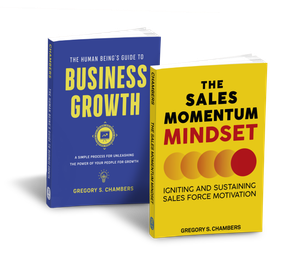Leaving an Effective Sales Voicemail: You're Not Doing It Right
Leaving an Effective Sales Voicemail: You're Not Doing It Right

This was on my voicemail last week (the phone number masking is my work):
Let's critique it.
It's terrible. Her volume is low, she sounds confused, it sounds like she mixed up scripts, and to top it off, she doesn't know what my business does.
Ooh, I Hate Voicemail
So voicemail's don't work, right? As my uncle might have said, "Not so fast, Sparky."
Over the years, people have stopped picking up the phone. Especially those people that have no idea you're calling, like your prospects. If your job involves calling new prospects, that means you'll get voicemail most of the time.
So be prepared.
Not all voicemail is bad. Like, what happens when an old friend calls and leaves a message? You listen to it. I know that sometimes you call right back and say, "I haven't had a chance to listen to your message," but on the whole, you listen to the message and confirm a few things:
Who is calling?
What do they want?
What does that mean to you?
What are you supposed to do next?
And that's for someone you know and want to hear from. Someone who you have a history with.
Before I get into what makes for a better voicemail, is it fair to expect the same warm response from a call to someone that doesn't know your company name or why you're calling? Probably not. So I'm suggesting that you work with that idea and do the following to make voicemail work for you.
Make Voicemail Work for You
The Rule of 27 is an old sales and marketing rule of thumb that says a prospect needs to be exposed to your idea 9 times before they take action. Since prospects are bombarded by messages, only every third message gets through. So, plan on trying to get in front of prospects 27 times before expecting them to understand your offer.
Voicemail is one of those 27 touches.
With that in mind, that voicemail is simply one of 27 touches a qualified prospect needs to understand who you are and why you're calling, take these four steps to optimize its effectiveness.
Start with this idea: Who are you?
When we consider it takes multiple touches to build awareness, the idea that you should mask your company name is a bad one. I used to run a training center and leaving the company name with receptionists and on voicemails was our number one advertising method. We had 100 locations with at least 10 salespeople making up to 100 calls a day. That's 1000 calls per center, 100,000 calls a day, every day for 250 days a year. 25,000,000 impressions of our company name.
It adds up. Identify yourself.
Second, state what the call is about.
Once the voicemail recipient knows who you are, they want to know why you're calling. Get to the point. "I'm calling because. . ." followed by a short sentence describing your client's typical outcomes is all that's needed here. Something to associate with the name of your company. "I'm calling because our clients are saving up to 30% on trade show shipping costs," orients the prospect's brain.
Third, relate that to the listener.
They now know who is calling, they have an idea about what you do, now relate it to them. ". . .and since you do multiple trade shows we may be able to help you too." Here's where my offending caller went awry. I looked them up and they offer trade show shipping. I haven't been in that business for years. Do your homework and make sure you're calling the right business. When spelled out, a quick message explaining what you do - and put in front of the right person - is an effective "touch" in the rule of 27.
Last, what do you expect the listener to do now?
You've identified yourself, you've oriented your business and related it to the listener, now you should explain what you want to happen next. Like, "You don't need to do anything, but I'm going to try and catch you on [date] to see if we can help you with your next trade show." If this is for a prospect you can help and it's viewed as simply one of 27 touches they will need to understand where you're coming from, you won't be caught expecting too much from this voicemail. It's one in a series. It may cause some action, or it may be one of the 18 touches that miss the mark.
Those four steps take about 15 seconds. Like a short radio spot.
Learn to Love the Voicemail
Voicemail isn't bad. It's one of the arrows in your sales and marketing quiver. Following these steps will help you use it in a way that helps.
Good stuff.





